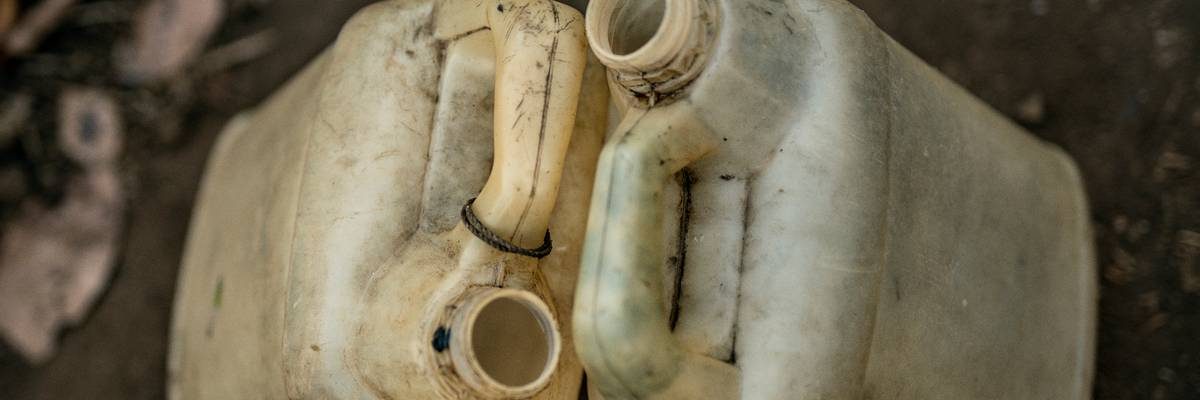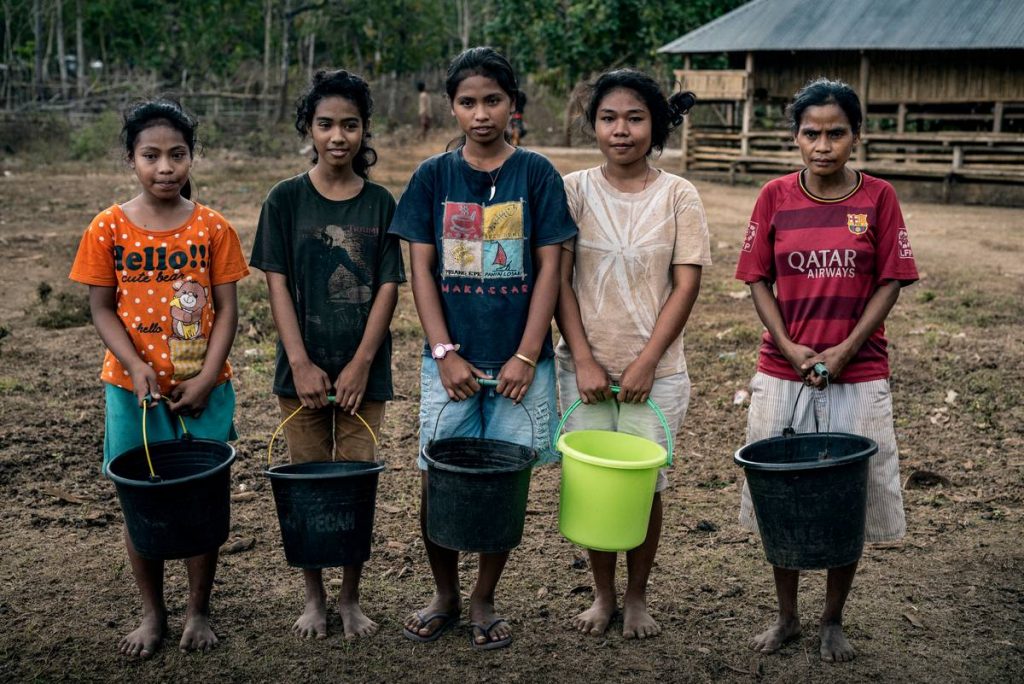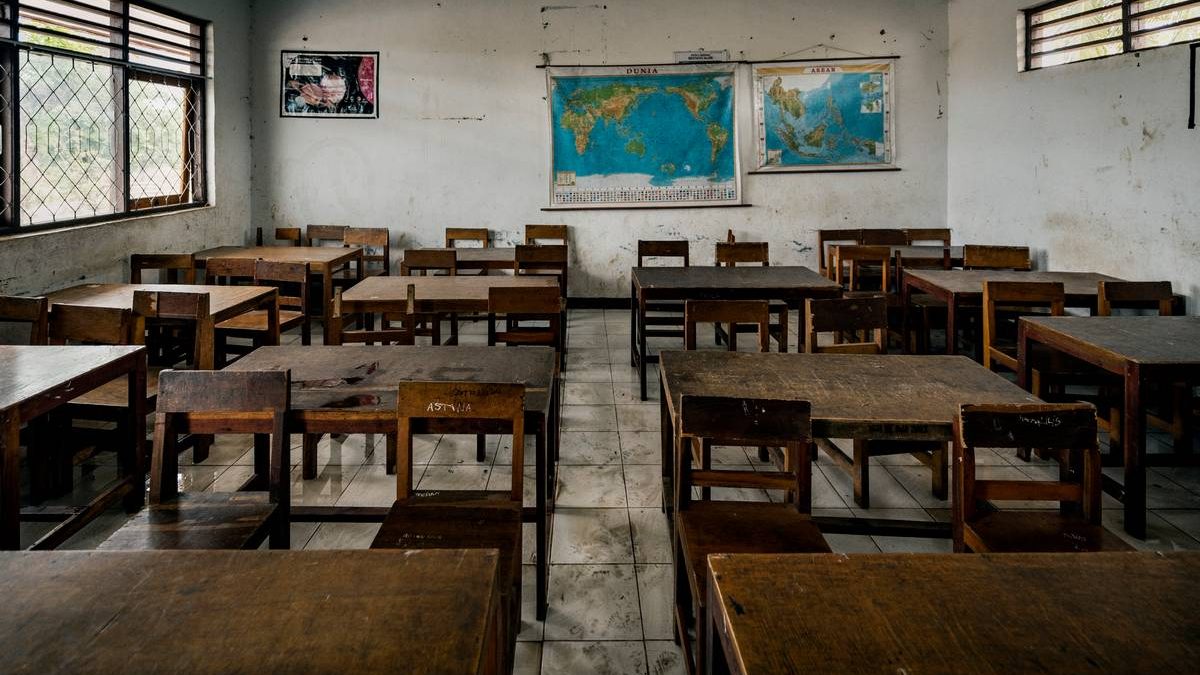Nagekeo District, East Nusa Tenggara Province, Indonesia
In collaboration with

June 2022 – May 2023
We coordinated with teachers, parents, community leaders and local government officials (area Education Office) to build gender-separated latrines, a water well and handwashing facilities in the three schools. We promote healthy practices among students.
Objectives
- To provide students with access to clean water and proper hygiene and sanitation habits.
- To achieve improved water and sanitation facilities.
- To improve students’ knowledge of appropriate hygiene and sanitation.
Beneficiaries
339 directs
306 students aged 6-12 (155 boys and 151 girls) and 33 teachers (12 men and 21 women) who face difficulties accessing adequate sanitation facilities.
375 indirects
375 boys and girls under the age of 5 who will start primary school in the next few years.

On the ground
The critical situation of school access to water and sanitation causes school absenteeism, gender inequality and health problems among students.
The 2017 data from the Indonesian Ministry of Education showed that only 1,835 (56.8%) public primary schools in the East Nusa Tenggara province (ENT) have toilets, and only 5.25% of the primary schools have adequate latrines and gender-segregated toilets in good condition. Only 458 toilets for boys and 383 for girls are in good condition. The National Ministry of Education Regulation no. 24 controls the ideal proportion of latrines in schools: one WC for every 25 boys and one for every 40 girls. But in ENT, the balance is one WC for every 87 boys and one for every 80 girls.
The water, hygiene, and sanitation situation in the Galawea, Watugase, and Malasera primary schools, where the project will be implemented, is critical:
- In Galawea, there is only one functioning toilet for 103 students and 12 teachers.
- In Watugase, there is only one functioning toilet for 121 students and 11 teachers.
- In Malasera, 82 students and nine teachers only have two toilets.
None of these three primary schools have piped water or wells. They either buy water from the mobile delivery service or collect water from the river. Sometimes, the children go to a small spring outside their school, but it is not always available, especially during the dry season.
Finally, due to the lack of access to drinking water, there are no hand washing facilities in these schools. This and inadequate hygiene and sanitation practices contribute to high numbers of diarrhea and skin diseases.
Adequate sanitation in schools is essential, as it improves the well-being of students, significantly reducing hygiene-related diseases and contributing to their overall health status. Furthermore, increasing students’ attendance enables them to maintain their progress and achieve better learning results. This is particularly important for girls, who are usually the most disadvantaged by poor facilities.
Reducing school absenteeism contributes to improved literacy rates and other educational results. It also enables students to practice good hygiene and health habits, which is essential if this knowledge is to be passed on to their families and eventually take root in the community.
Building separate toilets in schools is also essential to promote gender equality, guaranteeing privacy and dignity. UNESCO shows that, globally, because of inadequate sanitation facilities in schools, one in five adolescent girls drop out of school, especially when they have their period, as they do not want to attend a school with inadequate facilities.
The Indonesian government has set out to provide universal access to sanitation to the country’s entire population by 2030, as outlined in the 2020-2024 National Medium Term Development Plan. Its proposal also includes the upgrading of sanitation facilities in schools.

In detail
Work will be carried out in coordination with teachers, parents, community leaders, and local government officials (Regional Education Office) to build gender-segregated latrines, a water well, and hand washing facilities in three schools.
The project will also develop hygiene and sanitation promotional materials, including nudges to improve students’ knowledge and practice. Teachers and education officials will be empowered to promote adequate hygiene and sanitation practices and properly maintain the built facilities.
Within the first two weeks of project implementation, the project will be briefed and an agreement will be signed with schools, education officials, community leaders, and parents on their roles and responsibilities.
The project will use a design that guarantees that the water, sanitation, and hygiene (WASH) facilities meet the needs and desires of students. The building process of the facilities will take three months. To ensure school and community ownership, community members will participate and contribute their labor and construction materials available in their villages. The project will also work with PAMSIMAS officials (a governmental program focused on water and sanitation for low-income communities) to develop a detailed budget for the construction of the WASH facilities.
The main activities will be:
- Preparation meeting with schools and stakeholders.
- Building and renovating school latrines (segregated latrines for boys and girls).
- Building a water well for the school (concrete water tank linked to the water source).
- Building hand washing facilities in schools.
- Developing nudges and adequate hygiene and sanitation promotional materials.
- Supervision of activities.
Sustainability prospects
At a school level, the operation and maintenance of WASH facilities will be reactivated with the participation of stakeholders in schools and villages.
An essential aspect of ensuring sustainability will be the involvement of students, especially those with disabilities, in the design of the facilities. They will be involved in testing prototype facilities and sharing their feedback on whether the facilities meet their needs.
Mobilization of funds for their review and maintenance will be encouraged. The fund to support operation and maintenance will be linked to the school fund and village fund allocation. The involvement of local stakeholders and a written commitment to their support of WASH activities will be ensured from the beginning.
A key aspect of the project’s sustainability is the adoption of healthy practices among students. Therefore, in parallel with the construction of the WASH facilities, the project will develop materials and nudges on hygiene and sanitation. The materials will be contextualized according to the local needs and culture of the area. Several WASH promotion activities will also be carried out during this period.


